
 Author: Peng Zhao (Founder of Zhici Fang, Co-Founder of Yunhe Capital)IoT Think Tank Original
Author: Peng Zhao (Founder of Zhici Fang, Co-Founder of Yunhe Capital)IoT Think Tank Original
This is my 365th column article.
In the previous article “Tech Giants Enter TinyML, Edge AI Reaches a New Turning Point,” I mentioned that the TinyML Foundation has undergone a rebranding and is now known as the Edge AI Foundation.
Recently, the Edge AI Foundation released the latest version of the “2025 Edge AI Technology Report.” This report provides a comprehensive scan and summary of the development trends of Edge AI and TinyML.
From the report’s content, the maturity of TinyML may have exceeded many people’s expectations, with numerous application cases already emerging in real-world scenarios.
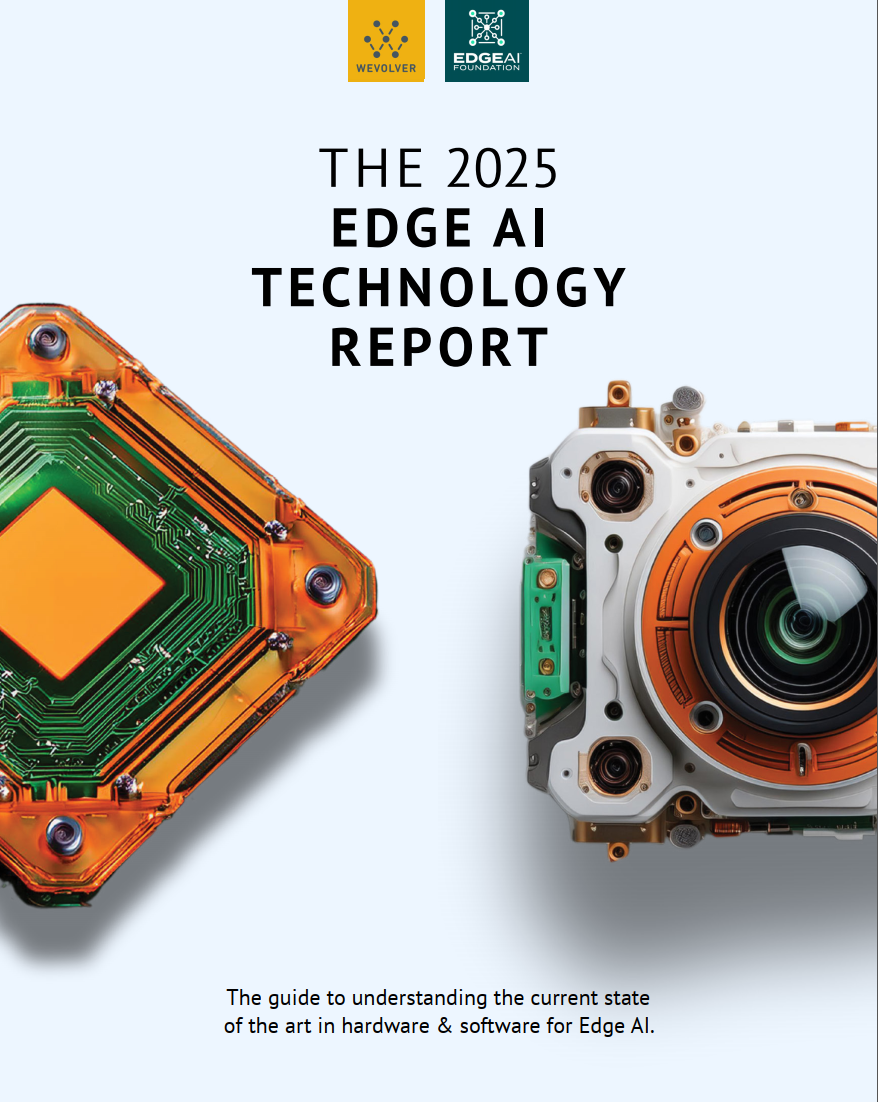
The highlights of the report are as follows:
-
Technological Drivers of Edge AI: The report delves into the software and hardware advancements supporting Edge AI deployment, focusing on innovations in dedicated processors and ultra-low power devices that are overcoming limitations in processing power and scalability in resource-constrained environments.
-
The Role of Edge AI in Industry Transformation: The report reveals how Edge AI is influencing operational models across various industries by enabling real-time analysis and decision-making capabilities.
-
Future Technologies and Innovations: The final chapter of the report looks ahead to emerging technologies that may impact the future development of Edge AI, such as federated learning, quantum neural networks, and neuromorphic computing.
Therefore, in today’s article, we will summarize the essence of the “2025 Edge AI Technology Report” to gain a comprehensive understanding of the latest developments and progress in TinyML and Edge AI.
Real-Time, Localized, Efficient: Innovative Applications of Edge AI in Six Major Industries
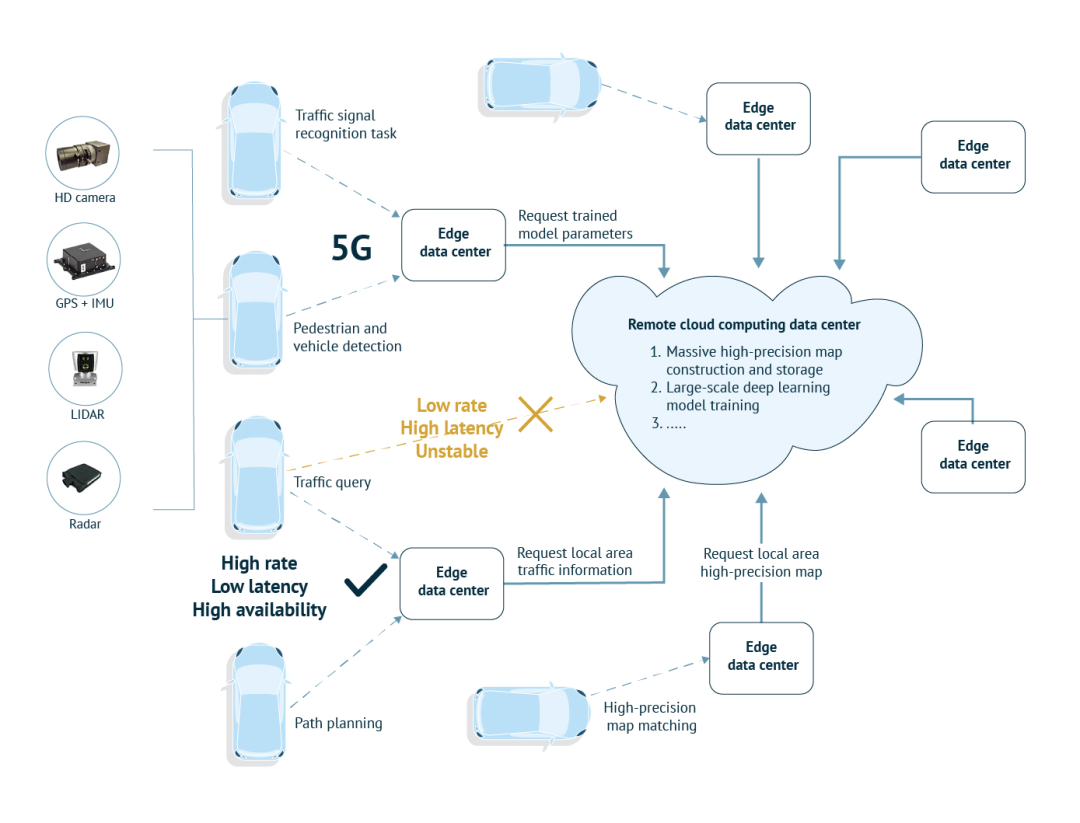
As the market demand for low-latency, real-time processing continues to grow, Edge AI is creating a wave across various industries, particularly in automotive, manufacturing, healthcare, retail, logistics, and smart agriculture. Edge AI significantly enhances efficiency, optimizes resource allocation, and improves user experience by performing real-time analysis and decision-making at the data source.
First, let’s look at the autonomous driving sector.
With camera resolutions reaching gigapixels and LiDAR systems emitting millions of laser pulses per second, Edge AI can accelerate response times and enhance safety. For example, Waymo has expanded its simulation training and evaluation to handle rare driving situations. Meanwhile, Li Auto expects its end-to-end model to learn from over 5 million driving data segments by the end of this year.
Similarly, as the AI market rapidly grows, real-time Edge AI has become crucial for improving efficiency and reducing downtime. In busy automotive production workshops, smart sensors immediately flag temperature spikes or mechanical stress, enabling teams to prevent disruptions before issues escalate. Drawing inspiration from the automotive industry, NIO’s NWM (NIO World Model) demonstrates the powerful capabilities of ultra-fast AI predictions. Likewise, Edge AI-based analytics can detect micro-defects on production lines with astonishing accuracy.
By combining speed, reliability, and device intelligence, real-time data processing is transforming the standard practices of autonomous driving, paving the way for a more adaptive and efficient future.
There are three main reasons why Edge AI is so important for autonomous vehicles:
-
Edge systems reduce reliance on cloud relays, achieving collision response times of under 50ms, which is critical for handling pedestrians suddenly crossing the road or unexpected events on highways.
-
Edge AI enables autonomous or semi-autonomous vehicles to maintain safety functions (such as lane keeping and adaptive cruise control) even in cellular blind spots. The updated Cellular Vehicle-to-Everything (C-V2X) technology roadmap from the 5G Automotive Association (5GAA) emphasizes a hybrid V2X architecture that combines edge processing with 5G-V2X direct communication. Edge AI hardware and sensor fusion algorithms allow autonomous vehicles to reduce decision latency by 30-40%, achieving response times as low as 20-50 milliseconds.
-
Integrating data from edge devices such as cameras, LiDAR, and radar can enhance perception reliability and enable safe navigation. For example, Innoviz’s 2024 LiDAR upgrade employs edge-optimized neural networks to process point cloud data at 20 frames per second, minimizing the latency in obstacle detection.
Next, let’s look at manufacturing.
Production lines generate vast amounts of data daily, with studies showing that smart factories produce over 5PB of data weekly. Edge AI systems can process this information locally, providing instant insights and automated responses. The impact of Edge AI is evident in three key areas: predictive maintenance, quality control systems, and process optimization.
Reports indicate that predictive maintenance systems utilizing real-time sensor data analysis can reduce maintenance costs by 30% and downtime by 45%. By continuously monitoring equipment performance, Edge AI algorithms can detect subtle anomalies and potential failures before they occur, enabling proactive maintenance and minimizing unexpected downtime.
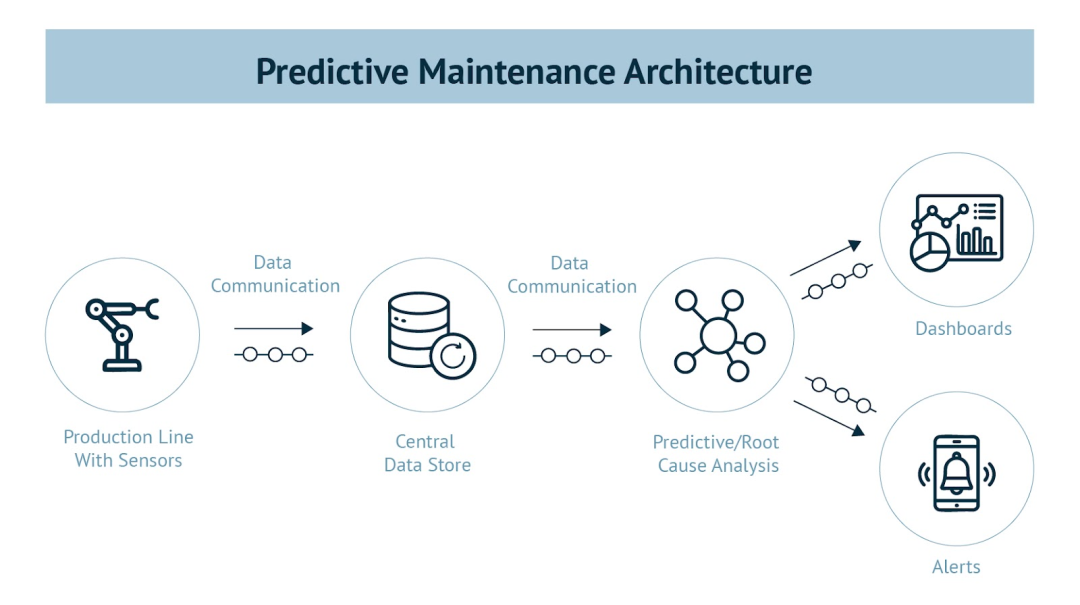
In terms of quality, Edge AI enhances quality control through real-time inspection and defect detection. For instance, a large food and beverage manufacturer deployed visual AI at the edge for quality inspection and closed-loop quality control. This system continuously monitors product variations and suggests adjustments to equipment settings, reducing inspection cycles by 50-75% and improving accuracy.
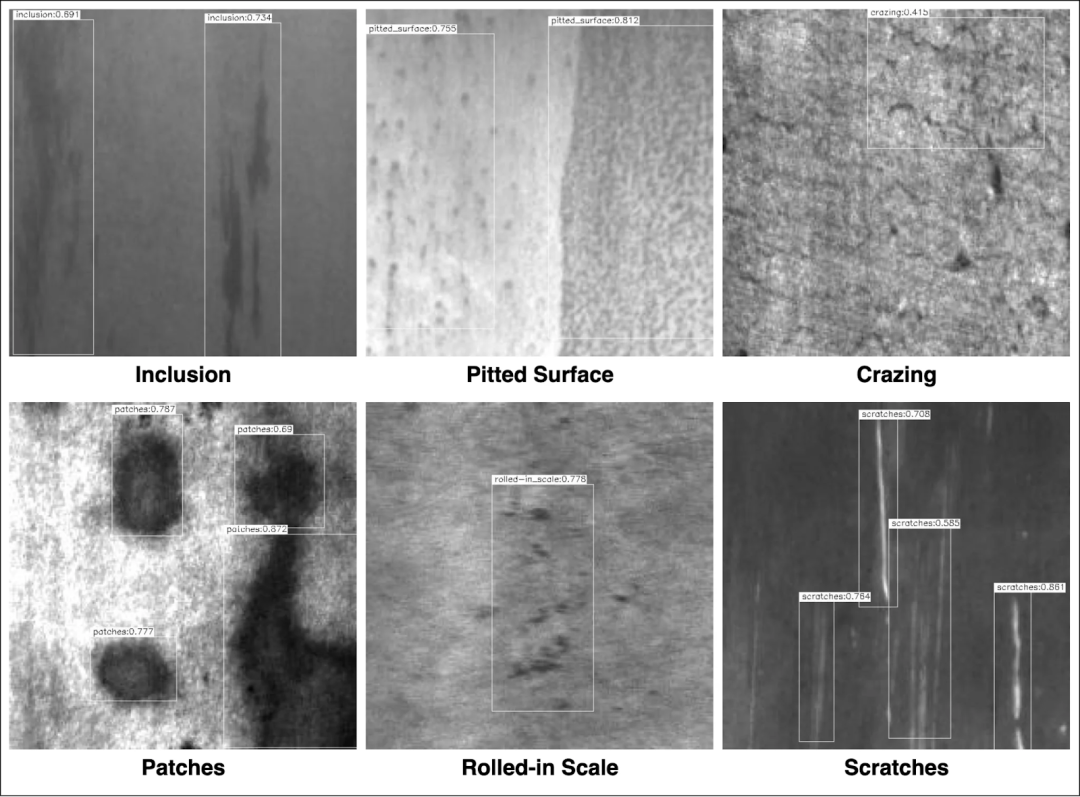
Third, in the healthcare sector, localized AI can accelerate diagnostics and improve patient outcomes by processing medical data directly on devices.
For example, Edge AI-driven remote patient monitoring devices (such as portable ECG and blood pressure monitors) can analyze heart rhythms and vital signs in real-time. These devices (such as those developed by AliveCor and Biobeat) enable clinicians to detect arrhythmias and other abnormalities without waiting for cloud-based analysis, thereby shortening response times in critical situations. 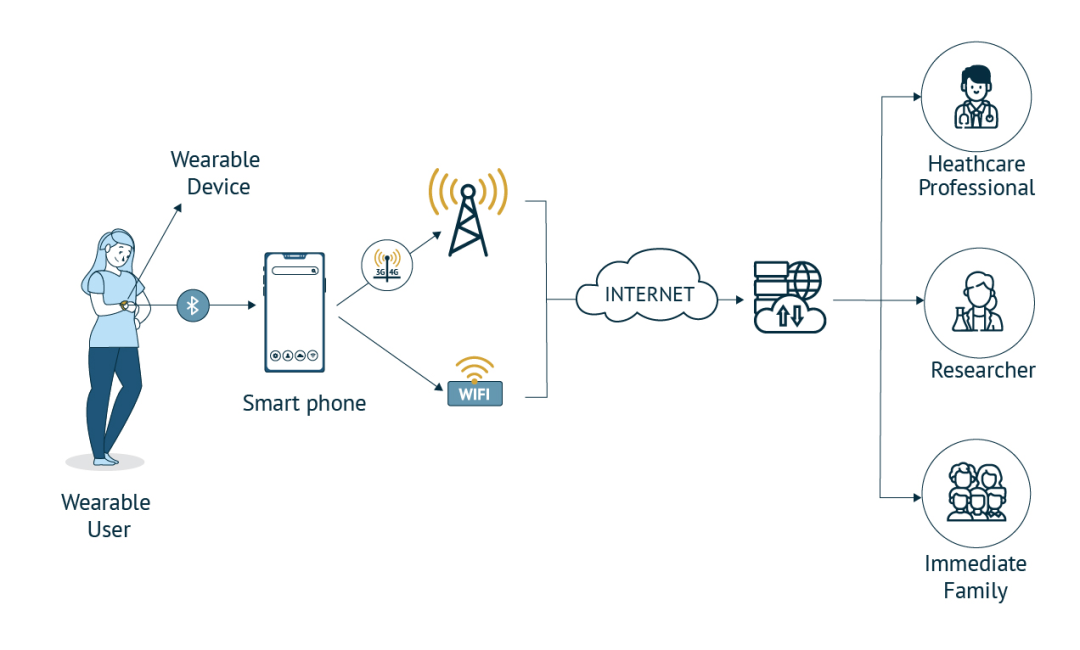 Fourth, Edge AI is transforming the retail industry by optimizing in-store operations and enhancing customer experiences through real-time behavior analysis.
Fourth, Edge AI is transforming the retail industry by optimizing in-store operations and enhancing customer experiences through real-time behavior analysis.
AI-driven smart shelves and checkout systems can process customer interactions locally, analyze purchasing patterns, and adjust inventory forecasts without relying on cloud synchronization. Retailers are deploying AI-driven video analytics to detect anomalies in foot traffic, monitor inventory levels, and reduce checkout times, thereby improving efficiency and lowering operational costs.
In terms of operations, AI-driven smart retail has already shown application prospects in 2025. AI-driven computer vision can enable fully contactless transactions, reducing average checkout times by 30%. Amazon Fresh has automated checkout by installing cameras on shelves or shopping carts, providing real-time consumption previews as customers leave.
Amazon’s Just Walk Out (JWO) system is a prime example of Edge AI in retail, integrating sensor arrays, device analytics, and advanced machine learning models. All computations are processed locally on custom edge hardware, enabling real-time decision-making and enhancing customer convenience and operational efficiency.
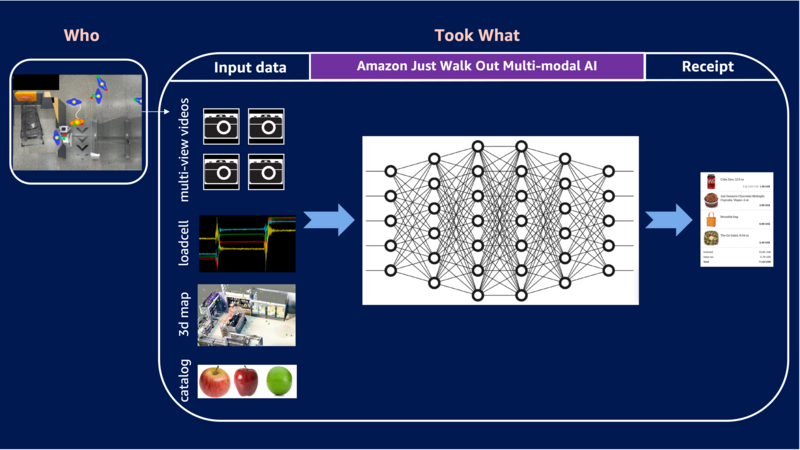
Fifth, Edge AI enhances logistics intelligence by integrating with IoT sensors, processing logistics data directly at distribution centers, warehouses, and transportation hubs.
Smart sensors analyze temperature fluctuations, motion anomalies, and inventory shortages on-site without transmitting large amounts of information to centralized servers, triggering instant alerts when deviations occur. For example, P&O Ferry masters have optimized freight capacity by 10% using AI-driven vessel loading programs, maintaining real-time visibility across the supply chain. Additionally, AI-driven predictions help reduce logistics costs by 20%.
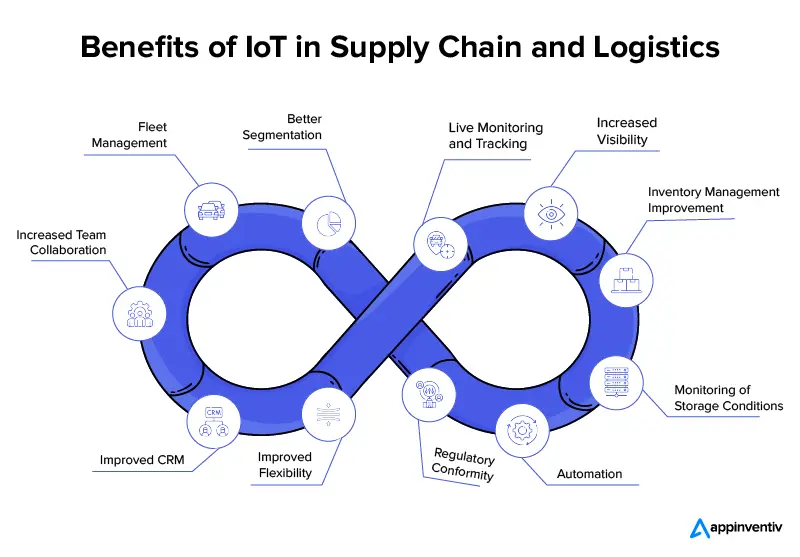
Finally, Edge AI is helping smart agriculture expand precision planting to meet the growing global food demand.
By 2050, the global population is expected to reach 9.8 billion, and agriculture must scale intelligently to meet the increasing food demand while minimizing environmental impact. Edge AI enables farms to expand their technological coverage without increasing complexity, analyzing soil conditions, monitoring weather patterns, and implementing automated irrigation systems.
Advanced sensors and AI models assess factors such as soil moisture or pest activity without sending data to remote servers, allowing for rapid intervention. Projects like CrackSense demonstrate how real-time sensing can ensure the quality of crops such as citrus, pomegranates, and grapes, reducing disasters and waste.
Smart irrigation systems equipped with Edge AI have shown effectiveness, dynamically adjusting water distribution based on localized soil moisture analysis, reducing water usage by 25%. Similarly, AI-driven pest detection can reduce pesticide use by 30%, ensuring precision agriculture and minimizing waste.
The Edge AI Ecosystem: Collaborative Innovation Under a Three-Layer Architecture
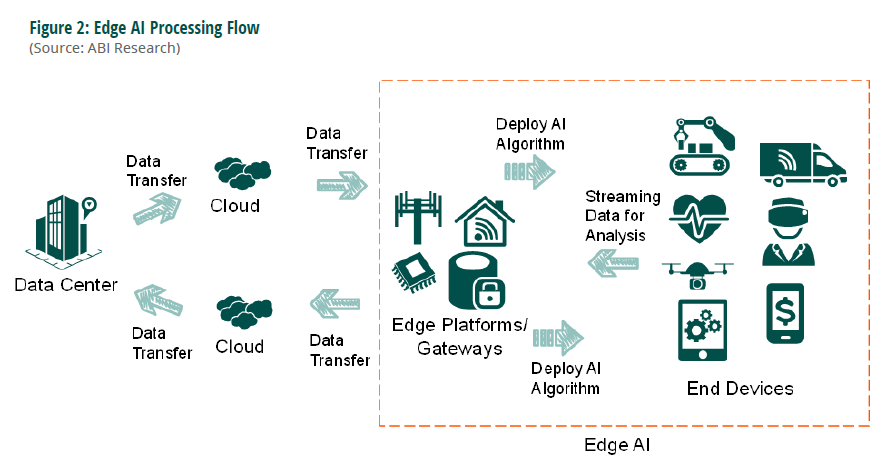
Today’s Edge AI ecosystem is at a critical stage: the success of projects depends on the collaboration of hardware vendors, software developers, cloud providers, and industry stakeholders. This state is likely to persist for a considerable time, making inter-company collaboration a priority.
Without interoperability standards, scalable deployment models, and shared R&D efforts, Edge AI risks fragmentation, limiting its application in key areas such as manufacturing, healthcare, and logistics.
The Edge AI ecosystem is widely recognized to adopt a three-layer architecture that distributes computational workloads across edge devices, edge servers, and cloud platforms. This structure allows AI models to perform real-time inference at the edge while leveraging higher computational power when needed. Each layer plays a unique role in processing, aggregating, and optimizing data for intelligent decision-making.
Edge devices and endpoints are the first points of interaction with real-world data. These devices include IoT sensors, industrial robots, smart cameras, and embedded computing systems deployed in manufacturing, healthcare, automotive, and retail environments. Their primary function is low-latency AI inference—processing data on-site without relying on continuous cloud connectivity.
Edge servers act as computational intermediaries between edge devices and the cloud. These servers are typically deployed in factories, hospitals, retail stores, and autonomous vehicle networks to aggregate data from multiple sources and execute more complex AI workloads. A key advantage of edge servers is localized AI inference: running heavier models without offloading data to remote data centers. This reduces latency, bandwidth costs, and security risks associated with cloud reliance.
It is important to distinguish between edge computing and endpoint devices; although they can be categorized together overall, significant differences exist due to constraints such as power consumption, size, and computational capability, making it inappropriate to apply the same approach to both. Edge devices (such as embedded cameras or industrial sensors) are designed for low-power AI inference, while more powerful edge servers serve as intermediaries, processing complex AI workloads before forwarding data to the cloud.
The cloud remains essential for model development, large-scale data analysis, and storage. It is the backbone for training deep learning models before optimizing and deploying them to the edge. Once trained, AI models are deployed to edge devices and edge servers to perform inference tasks in production environments. The cloud also serves as the backbone for monitoring, analyzing, and centrally orchestrating AI models, ensuring efficiency across thousands or even millions of edge endpoints.
While the three-layer architecture encompasses the entirety of Edge AI, cross-industry collaboration among enterprises is becoming increasingly close.
Semiconductor companies are collaborating with AI developers to enhance model efficiency on dedicated hardware; cloud providers are integrating edge-native computing solutions; and research institutions are partnering with industry leaders to advance scalable architectures.
In terms of hardware and cloud collaboration, Intel is promoting the adoption of Edge AI through its Edge AI Partner Support Package, which provides enterprises with tools, frameworks, and technical resources to accelerate Edge AI deployment.
Another notable collaboration involves Qualcomm and Meta, who are working to directly integrate Meta’s Llama large language model into Qualcomm’s edge processors. This partnership reduces reliance on cloud-based LLMs, enabling devices to execute generative AI workloads on-site.
MemryX and Variscite have also announced a partnership aimed at enhancing Edge AI efficiency. By combining MemryX’s AI accelerator with Variscite’s System on Module (SoM) solutions, AI deployment on edge devices is simplified, particularly for applications in industrial automation and healthcare.
Google is collaborating with Synaptics to develop Edge AI systems. Google’s Kelvin MLIR-compatible machine learning core will be integrated into Synaptics’ Astra AI-Native IoT computing platform. The two companies will work together to define the best implementations of IoT Edge context-aware computing multi-modal processing for applications such as wearables, home appliances, entertainment, and monitoring.
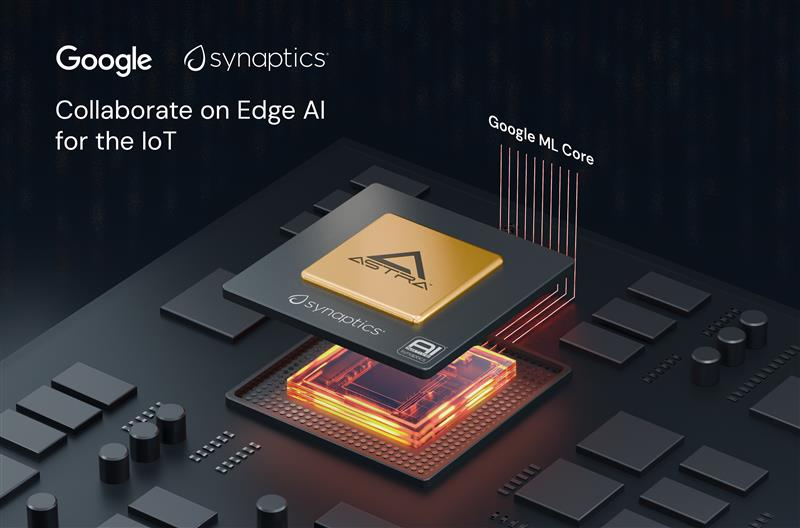
Government-industry-academia collaboration plays a crucial role in advancing Edge AI research and deployment, with some countries launching pilot projects and collaborative platforms for Edge AI.
In the UK, the National Centre for Edge AI is a collaborative platform that unites academia, industry, and the public sector to advance Edge AI technology. Led by Newcastle University, the center brings together multidisciplinary teams from institutions across the UK, aiming to improve data quality and decision accuracy in time-critical applications such as healthcare and autonomous electric vehicles.
Similarly, the National Science Foundation’s NAIRR pilot project in the US is a large-scale initiative aimed at achieving AI ubiquity. Industry participants such as Intel, NVIDIA, Microsoft, Meta, OpenAI, and IBM contribute computational power and AI tools for researchers developing secure and energy-efficient AI applications.
From Federated Learning to Neuromorphic Computing: Five Cutting-Edge Trends in Edge AI
Technological advancements are rapid, and five emerging trends in Edge AI are reshaping AI systems, including federated learning, edge-native AI models, quantum-enhanced intelligence, and edge generative AI. These trends interconnect, allowing autonomous vehicles to train each other without relying on centralized datasets; hospitals to deploy AI models that evolve in real-time based on patient data, ensuring highly personalized treatment; and industrial robots to operate with predictive intelligence, detecting and repairing issues before they occur.
Emerging innovations in areas such as neuromorphic computing, multi-agent reinforcement learning, and post-quantum cryptography are also redefining the possibilities of Edge AI, making AI systems faster, safer, and more efficient.
1. Federated Learning: Decentralized Intelligence at the Edge
Federated Learning (FL) is evolving from privacy protection to becoming the cornerstone of decentralized intelligence. Over the next five years, federated frameworks are expected to actively enhance model adaptability, autonomy, and cross-industry collaboration. The market is projected to reach nearly $300 million in value by 2030, with a compound annual growth rate of 12.7%.
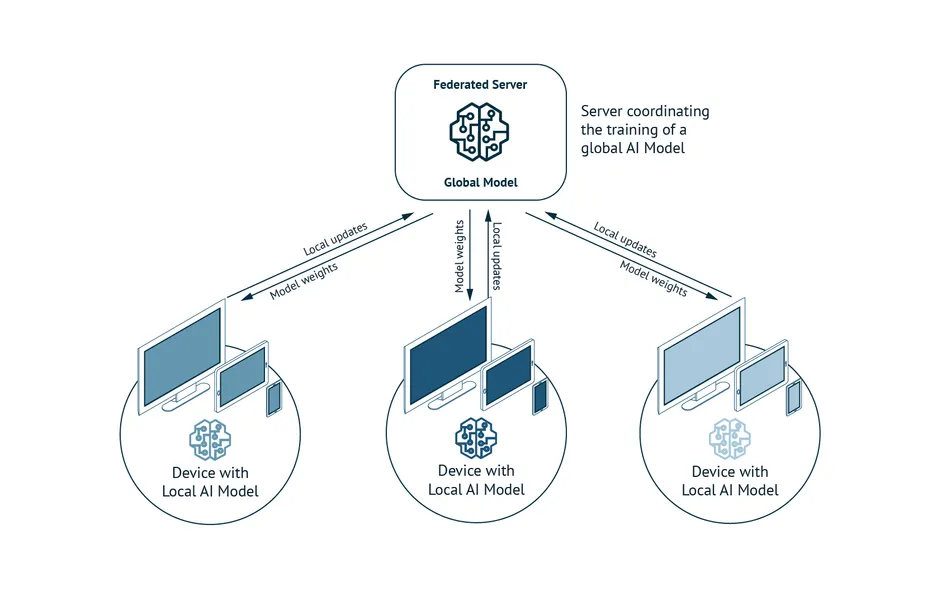
Another major driver of federated learning’s evolution is its integration with next-generation networks like 6G. As the scale of edge deployments expands, ultra-low-latency networks will enable AI models to synchronize more effectively across distributed devices, reducing the time required for optimization and deployment updates. The emergence of quantum federated learning (QFL) is also being explored to reduce the communication burden between devices, making the communication process in large-scale IoT networks more efficient.
2. Edge Quantum Computing and Quantum Neural Networks
Quantum computing will redefine the capabilities of Edge AI. While today’s Edge AI relies on optimized deep learning models and low-power hardware accelerators, quantum computing introduces a fundamentally different approach: leveraging quantum states to process exponentially larger datasets and optimize decisions at speeds unattainable by traditional methods. As quantum processing units (QPUs) surpass cloud-based infrastructure, hybrid quantum-classical AI will emerge at the edge, enhancing real-time decision-making capabilities in industries such as finance, healthcare, energy, and industrial automation.
Quantum neural networks (QNNs) are a new type of AI model that utilize quantum properties to detect patterns and relationships in data that traditional AI struggles to achieve. Unlike existing neural networks that require increased power and memory to enhance performance, QNNs can process information in a more compact and efficient manner.
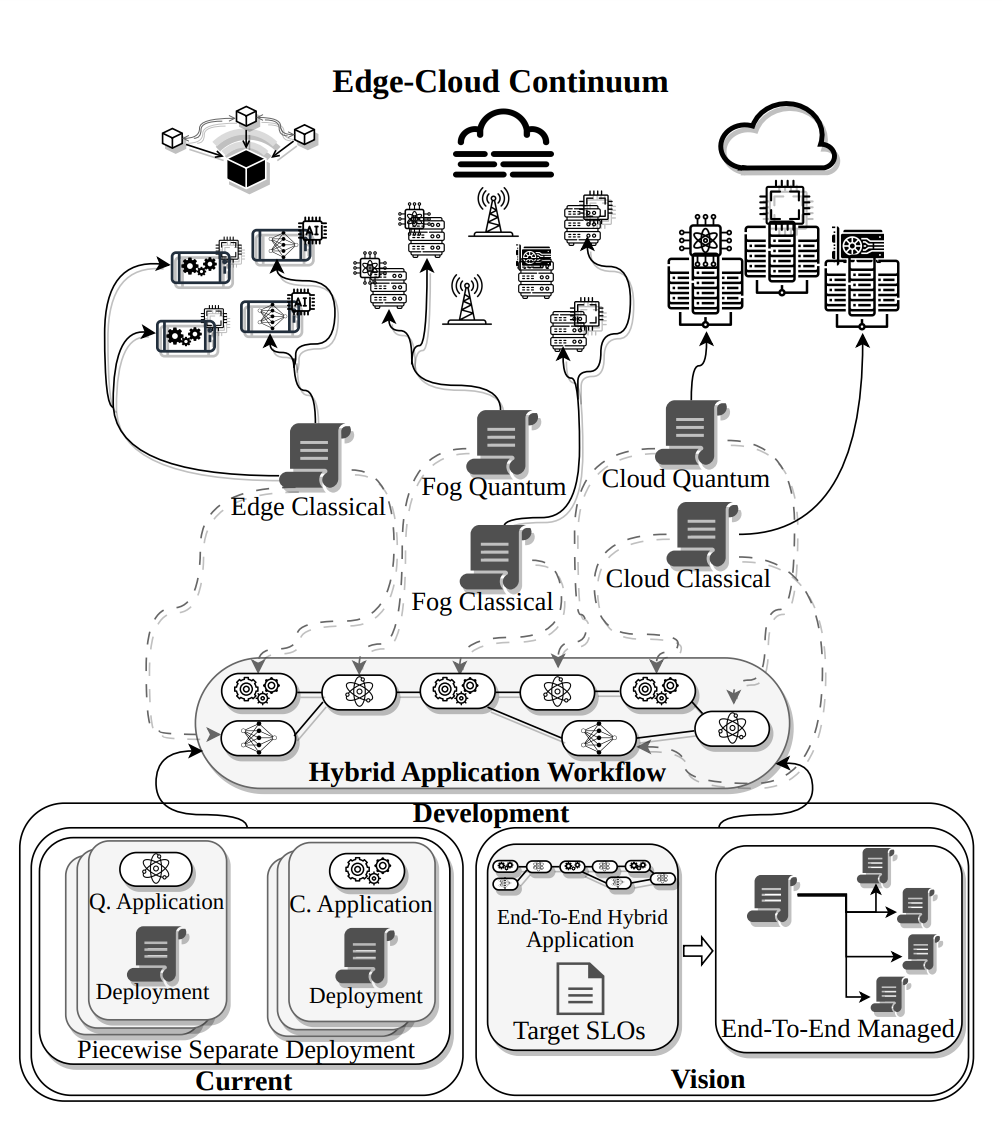
So far, quantum computing has been limited to cloud data centers due to its hardware requirements (including extreme cooling). However, recent advancements in mobile QPUs are likely to make it possible to run quantum algorithms at room temperature. In the coming years, quantum computing will not only be confined to the cloud but can also be embedded in edge autonomous systems, industrial robots, and IoT devices.
3. Autonomous Humanoid Robots with Edge AI
The next phase of humanoid robots will be defined by embodied intelligence, where AI models become more adaptive, responsive, and capable of self-improvement.
In retail environments, humanoid robots can assist consumers by answering verbal inquiries, analyzing facial expressions, and navigating store layouts. Simultaneously, in hospitals and nursing homes, AI robots can monitor patients, assist with mobility, and detect subtle behavioral changes that may indicate medical emergencies, all while ensuring data privacy and security through on-device processing.

4. AI-Driven AR/VR: The Next Evolutionary Direction
Augmented reality (AR) and virtual reality (VR) are no longer limited to gaming and entertainment; Edge AI is a key driver of this development. Next-generation AR/VR devices will process information locally, enabling real-time responses and improving energy efficiency.
AI-driven spatial computing will allow AR glasses and VR headsets to dynamically adjust overlays, depth perception, and environmental interactions based on context.
In industrial settings, this means AR-driven workspaces will provide engineers with hands-free, AI-generated instructions that adapt in real-time to real-world conditions. In healthcare, AR-assisted surgeries will integrate AI capabilities to enhance precision, updating in milliseconds based on the surgeon’s actions without cloud-induced delays.
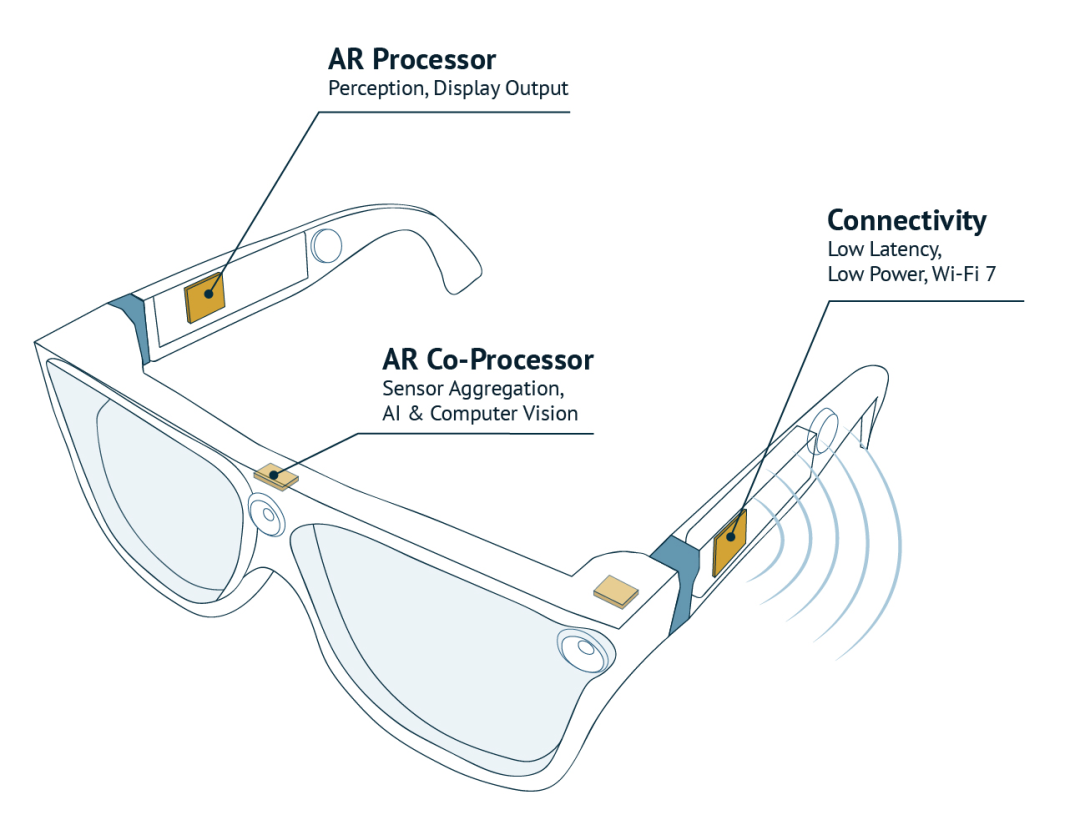
5. Neuromorphic Computing: The Future of Low-Power AI
By introducing brain-inspired architectures, neuromorphic computing is expected to become increasingly popular in the Edge AI field, offering significant advantages in energy efficiency and processing capability. Unlike traditional computing systems that separate memory and processing units, neuromorphic systems integrate these functions, mimicking the parallel and event-driven characteristics of the human brain. This design allows them to process complex real-time data tasks with minimal energy consumption, making them ideal for edge applications.
For example, a study published in the journal Nature in 2022 introduced the NeuRRAM chip, which simulates computing architecture with energy efficiency twice that of state-of-the-art “memory computing” chips, capable of executing complex cognitive tasks on edge devices without cloud connectivity. This leap reflects the transition from desktop computers to smartphones, unlocking portable applications once thought impossible.
Research and early commercial deployments indicate that neuromorphic chips can redefine how intelligence is deployed at the edge.
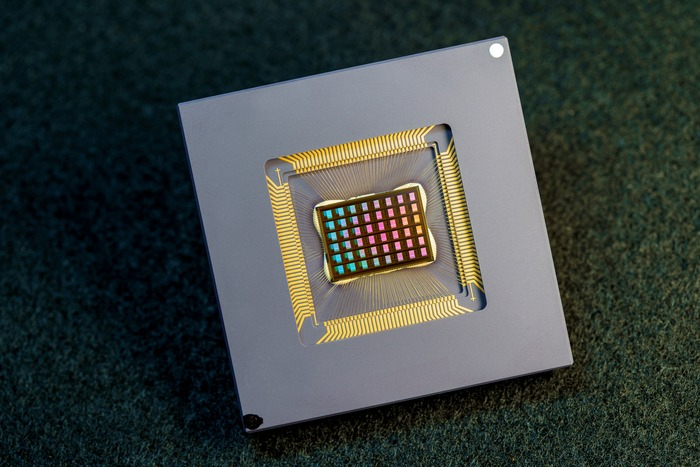
In Conclusion
Edge AI is reshaping various industries, from autonomous vehicles to smart manufacturing, healthcare to retail logistics, and smart agriculture. By bringing the power of AI to the data source, Edge AI achieves unprecedented real-time insights, autonomous decision-making, and resource optimization.
Its rise marks a fundamental shift of AI from centralized cloud models to distributed intelligence.
As the Edge AI ecosystem continues to mature, the pace of innovation is accelerating. From federated learning to neuromorphic computing, from quantum-enhanced intelligence to AI-driven augmented reality, cutting-edge technologies are redefining the possibilities of Edge AI. Looking ahead, Edge AI is poised to become a key force driving industry transformation and societal progress.
Finally, here is the download link for the report; interested friends can click below to read the original text.




